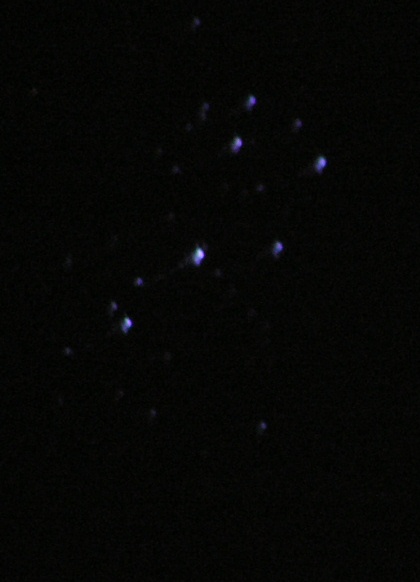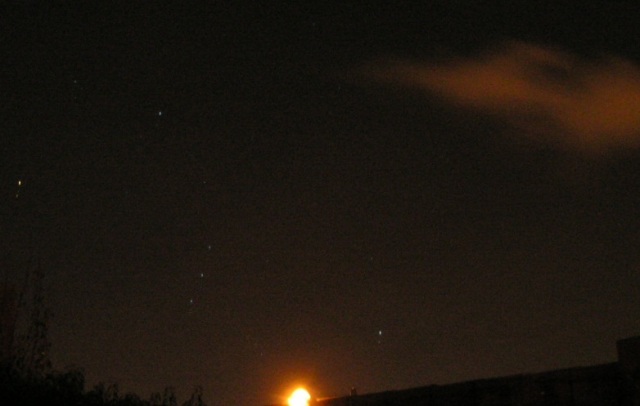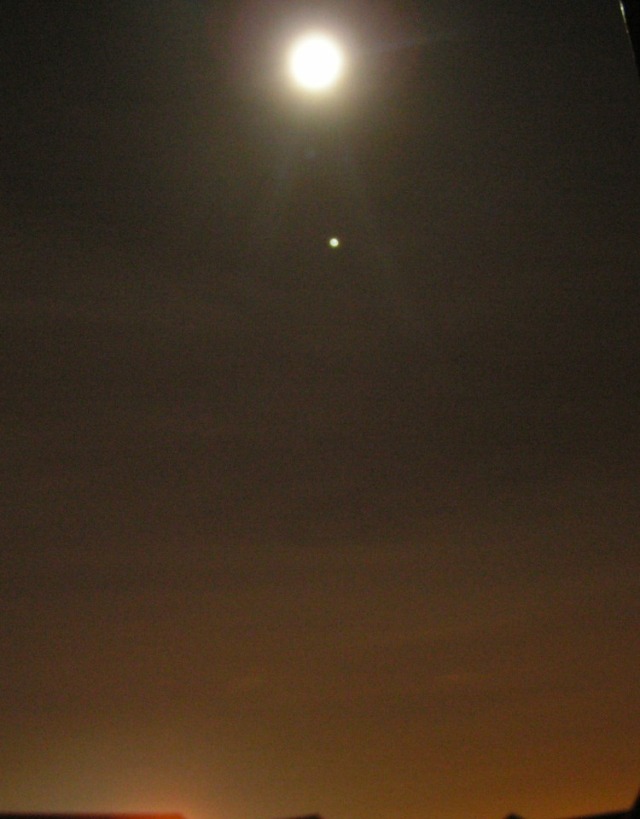When The Sky At Night gives advice on this sort of thing, it is always along the lines of “find yourself a dark place well away from any street lights, lay out your recliner, and prepare for a long night”. That’s fine, if you are really into the subject, and have shares in a woolly hat manufacturer. But what if you just spot something vaguely pretty in the sky, and just want a quick snap?
The answer is – just do it. Any modern digital camera has a choice of exposure settings, and one of them usually allows you to set the shutter speed manually. Set it to five seconds, point the camera at whatever you’re looking at, and use any optical zoom (not digital – that’ll just make a lower quality image). If you have a little tripod to fit on the bottom, great – if not, angle the camera up by using books or magazines or something. Then just click.
Dark skies are great, and reveal a depth and detail that you simply don’t get in town. But anyone who tells you you can’t see anything at all from urban centres is talking rubbish. The moon, the brighter planets and the most prominent constellations are easily visible from anywhere I’ve ever been, including floodlit stadia (although the chances of stable photography from inside Wembley will be greatly reduced…).
Here’s a couple I took just before 11pm yesterday, from my house, in a brightly-lit town. They’re not great images, but that’s the point – they don’t need to be, they’re just for your benefit. Have a go!

The Pleiades star cluster

Orion rising

The Moon aligned with Jupiter
